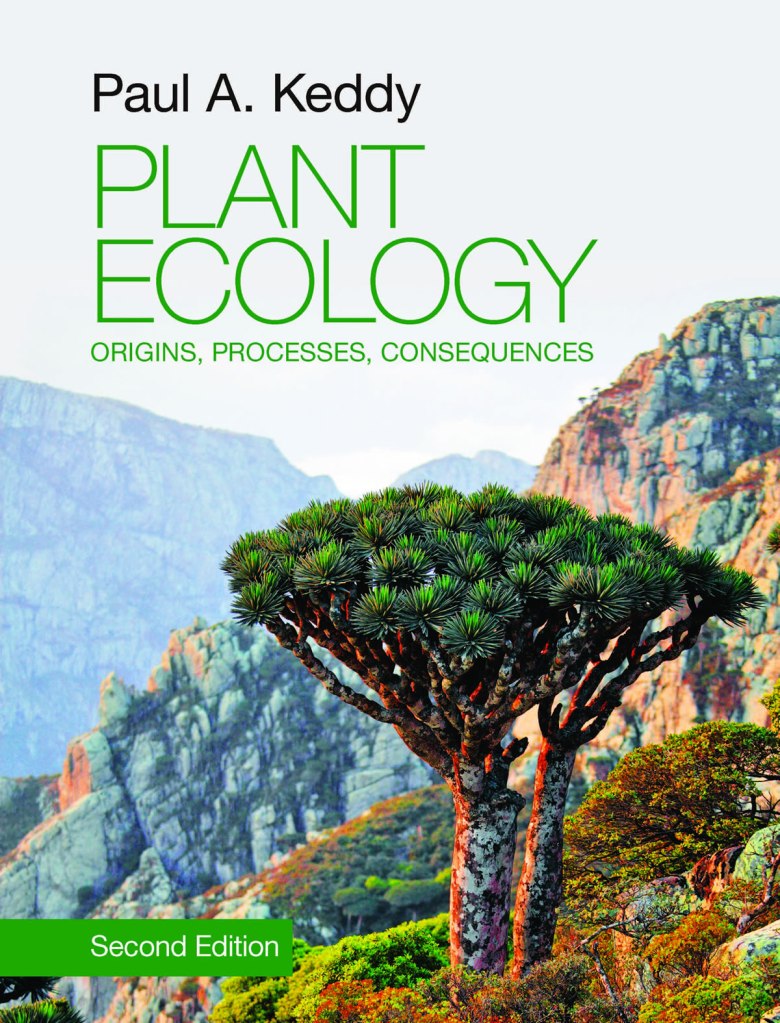2017 Edition, Dr. Paul A. Keddy
This book offers a fresh, balanced, contemporary, comprehensive approach to the study of plant ecology, including populations, communities and ecosystems.
Overview
Thirteen chapters provide instructors and readers with an organized introduction to plant ecology suitable for a one or two semester course.
- Comprehensive — 13 chapters, 300+ figures, 80 tables, more than 1000 references.
- Global scope — Familiar temperate zone examples mixed with world-wide examples including South American tepuis, South African fynbos, North American pine savannas, and New Zealand beech forests.
- Rich natural history — Copiously illustrated with colour photos to enhance appreciation of plants as organisms. Carnivorous plants. Parasitic plants. Epiphytic plants. Aquatic plants. Arctic plants. Succulents. Endolithic lichens. Myrmecochorous plants. Orchids. Grasses. Asters.
- Processes emphasized — Resource acquisition. Plants and climate. Natural disturbance. Fire ecology. Competition, predation, and mutualism. Plant diversification and evolution. Alternation of generations. Ice Ages. Gradients. Protecting plant diversity.
- Fresh examples — Large herbivores in African savannas. Bark beetles and spruce budworm in coniferous forests. Floodplain disturbance in the Amazon basin. Tortoise grazing in the Galapagos. Roman deforestation in the Mediterranean. Pollination of tropical trees by bats and birds.
- Models — Exponential population growth. Trade-offs in sexual and asexual reproduction. Matrix models for population dynamics. CSR and r-K continua in life history strategies. Trends during succession. Plant-herbivore population dynamics. Thresholds in ecosystem collapse.
- Conservation — Applied examples throughout combined with a unified treatment in a final chapter. Biological hotspots. Ecosystems at risk. Design of reserve systems. Effects of grazing and logging. Ecosystem restoration.
- Expansive referencing — More than 1000 references. Includes classic historical papers, little-known examples that illustrate important general principles, and emerging topics in plant ecology. Each chapter ends with key readings and review questions.







